1. de Jong L, Thewissen L, van Loon J, Van Calenbergh F. 2011; Choroidal fissure cerebrospinal fluid-containing cysts: case series, anatomical consideration, and review of the literature. World Neurosurg. 75:704–8. DOI:
10.1016/j.wneu.2010.12.056. PMID:
21704940.

2. Zemmoura I, Velut S, François P. 2012; The choroidal fissure: anatomy and surgical implications. Adv Tech Stand Neurosurg. 38:97–113. DOI:
10.1007/978-3-7091-0676-1_5. PMID:
22592413.

3. Yamada S, Ishikawa M, Iwamuro Y, Yamamoto K. 2016; Choroidal fissure acts as an overflow device in cerebrospinal fluid drainage: morphological comparison between idiopathic and secondary normal-pressure hydrocephalus. Sci Rep. 6:39070. DOI:
10.1038/srep39070. PMID:
27941913. PMCID:
PMC5150242.

4. da Costa MDS, Santos BFO, Bouchabki de Almeida Guardini F, Chaddad-Neto F. 2017; Microsurgical treatment for arteriovenous malformation of the corpus callosum and choroidal fissure. Neurosurg Focus. 43(VideoSuppl1):V12. DOI:
10.3171/2017.7.FocusVid.1733. PMID:
28669263.

5. Jean WC. 2018; Transcallosal, transchoroidal resection of a recurrent craniopharyngioma. J Neurol Surg B Skull Base. 79(Suppl 3):S259–60. DOI:
10.1055/s-0038-1624585. PMID:
29588891. PMCID:
PMC5868919.

6. Isolan GR, Oliveira Ed, Recalde R. 2005; [Microanatomical study of the choroidal fissure in ventricular and cisternal approaches]. Arq Neuropsiquiatr. 63:801–6. Portuguese. DOI:
10.1590/S0004-282X2005000500015. PMID:
16258659.
7. Wen HT, Rhoton AL Jr, de Oliveira E. 1998; Transchoroidal approach to the third ventricle: an anatomic study of the choroidal fissure and its clinical application. Neurosurgery. 42:1205–17. discussion 1217–9. DOI:
10.1097/00006123-199806000-00001. PMID:
9632178.

8. Siwanuwatn R, Deshmukh P, Zabramski JM, Preul MC, Spetzler RF. 2005; Microsurgical anatomy and quantitative analysis of the transtemporal-transchoroidal fissure approach to the ambient cistern. Neurosurgery. 57(4 Suppl):228–35. discussion 228–35. DOI:
10.1227/01.NEU.0000176407.35946.88. PMID:
16234669.

9. Wu A, Chang SW, Deshmukh P, Spetzler RF, Preul MC. 2010; Through the choroidal fissure: a quantitative anatomic comparison of 2 incisions and trajectories (transsylvian transchoroidal and lateral transtemporal). Neurosurgery. 66(6 Suppl Operative):221–8. discussion 228–9. DOI:
10.1227/01.NEU.0000369920.68166.6C. PMID:
20489509.
10. Ikeda K, Shoin K, Mohri M, Kijima T, Someya S, Yamashita J. 2002; Surgical indications and microsurgical anatomy of the transchoroidal fissure approach for lesions in and around the ambient cistern. Neurosurgery. 50:1114–9. discussion 1120DOI:
10.1227/00006123-200205000-00030. PMID:
11950415.

11. Nagata S, Rhoton AL Jr, Barry M. 1988; Microsurgical anatomy of the choroidal fissure. Surg Neurol. 30:3–59. DOI:
10.1016/0090-3019(88)90180-2.

12. Catala M, Poirier J. 1998; [Arachnoid cysts: histologic, embryologic and physiopathologic review]. Rev Neurol (Paris). 154:489–501. French. PMID:
9773082.
13. Maher CO, Piatt JH Jr. 2015; Incidental findings on brain and spine imaging in children. Pediatrics. 135:e1084–96. DOI:
10.1542/peds.2015-0071. PMID:
25825535.

14. Tubbs RS, Muhleman M, McClugage SG, Loukas M, Miller JH, Chern JJ, Rozzelle CJ, Oakes WJ, Cohen-Gadol AA. 2012; Progressive symptomatic increase in the size of choroidal fissure cysts. J Neurosurg Pediatr. 10:306–9. DOI:
10.3171/2012.7.PEDS11515. PMID:
22900488.

15. Morioka T, Nishio S, Suzuki S, Fukui M, Nishiyama T. 1994; Choroidal fissure cyst in the temporal horn associated with complex partial seizure. Clin Neurol Neurosurg. 96:164–7. DOI:
10.1016/0303-8467(94)90054-X.

17. Chitkara R, Rajani A, Bernstein J, Shah S, Hahn JS, Barnes P, Hintz SR. 2011; Newborn with prenatally diagnosed choroidal fissure cyst and panhypopituitarism and review of the literature. AJP Rep. 1:111–4. DOI:
10.1055/s-0031-1293512. PMID:
23705098. PMCID:
PMC3653523.

18. Tas E, Tracy M, Sarco DP, Eksioglu YZ, Prabhu SP, Loddenkemper T. 2011; Septo-optic dysplasia complicated by infantile spasms and bilateral choroidal fissure arachnoid cysts. J Neuroimaging. 21:89–91. DOI:
10.1111/j.1552-6569.2009.00453.x. PMID:
20002969.

19. Sherman JL, Camponovo E, Citrin CM. 1990; MR imaging of CSF-like choroidal fissure and parenchymal cysts of the brain. AJR Am J Roentgenol. 155:1069–75. DOI:
10.2214/ajr.155.5.2120937. PMID:
2120937.

20. Reimão S, Sousa R, Morgado C. 2006; [Intraparenchymal neuroepithelial cysts--imaging findings in four clinical cases]. Acta Med Port. 19:509–12. Portuguese.
21. Osborn AG, Preece MT. 2006; Intracranial cysts: radiologic-pathologic correlation and imaging approach. Radiology. 239:650–64. DOI:
10.1148/radiol.2393050823. PMID:
16714456.

22. Aprile I, Iaiza F, Lavaroni A, Budai R, Dolso P, Scott CA, Beltrami CA, Fabris G. 1999; Analysis of cystic intracranial lesions performed with fluid-attenuated inversion recovery MR imaging. AJNR Am J Neuroradiol. 20:1259–67. PMID:
10472983.
23. Kjos BO, Brant-Zawadzki M, Kucharczyk W, Kelly WM, Norman D, Newton TH. 1985; Cystic intracranial lesions: magnetic resonance imaging. Radiology. 155:363–9. DOI:
10.1148/radiology.155.2.3983386. PMID:
3983386.

24. Park SW, Yoon SH, Cho KH, Shin YS. 2006; A large arachnoid cyst of the lateral ventricle extending from the supracerebellar cistern--case report. Surg Neurol. 65:611–4. DOI:
10.1016/j.surneu.2005.07.069. PMID:
16720186.

25. Becker T, Wagner M, Hofmann E, Warmuth-Metz M, Nadjmi M. 1991; Do arachnoid cysts grow? A retrospective CT volumetric study. Neuroradiology. 33:341–5. DOI:
10.1007/BF00587820. PMID:
1922751.
26. Eymann R, Kiefer M. 2018; [Relevance and therapy of intracranial arachnoidal cysts]. Radiologe. 58:135–41. German. DOI:
10.1007/s00117-017-0340-x. PMID:
29255958.
27. Parrent AG. 2000; Endoscopically guided fenestration of the choroidal fissure for treatment of trapped temporal horn. J Neurosurg. 93:891–4. DOI:
10.3171/jns.2000.93.5.0891. PMID:
11059675.

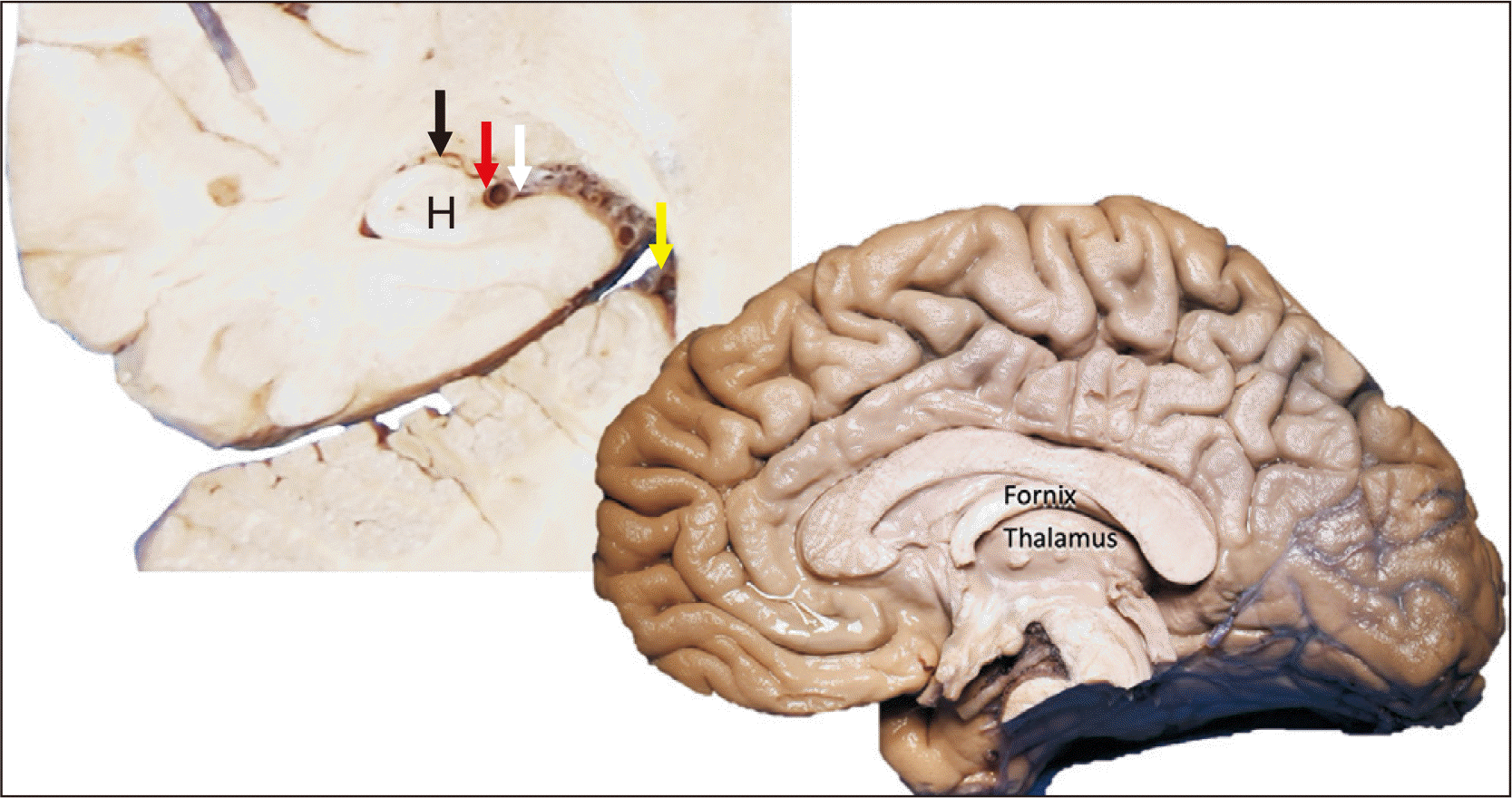
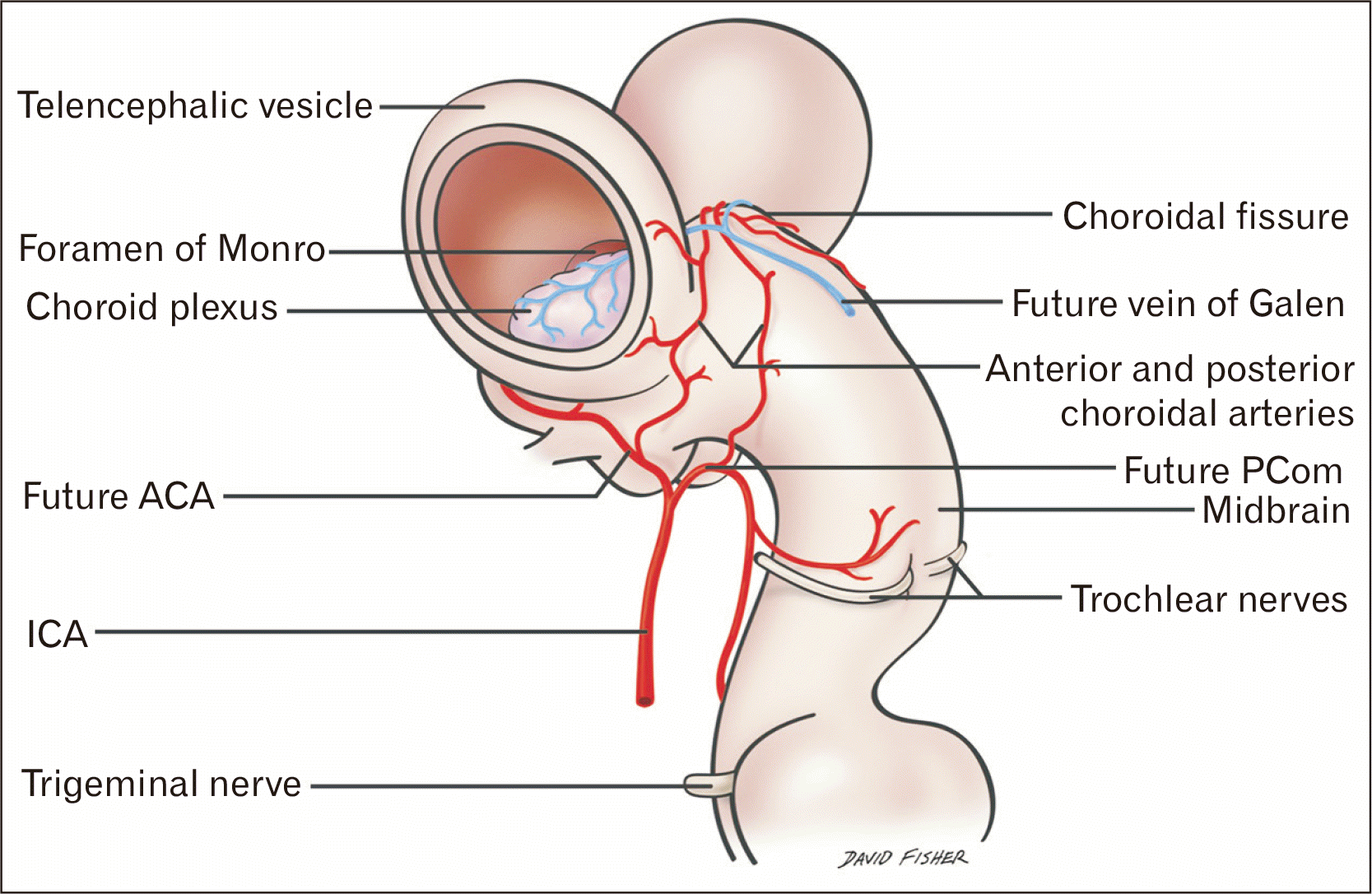
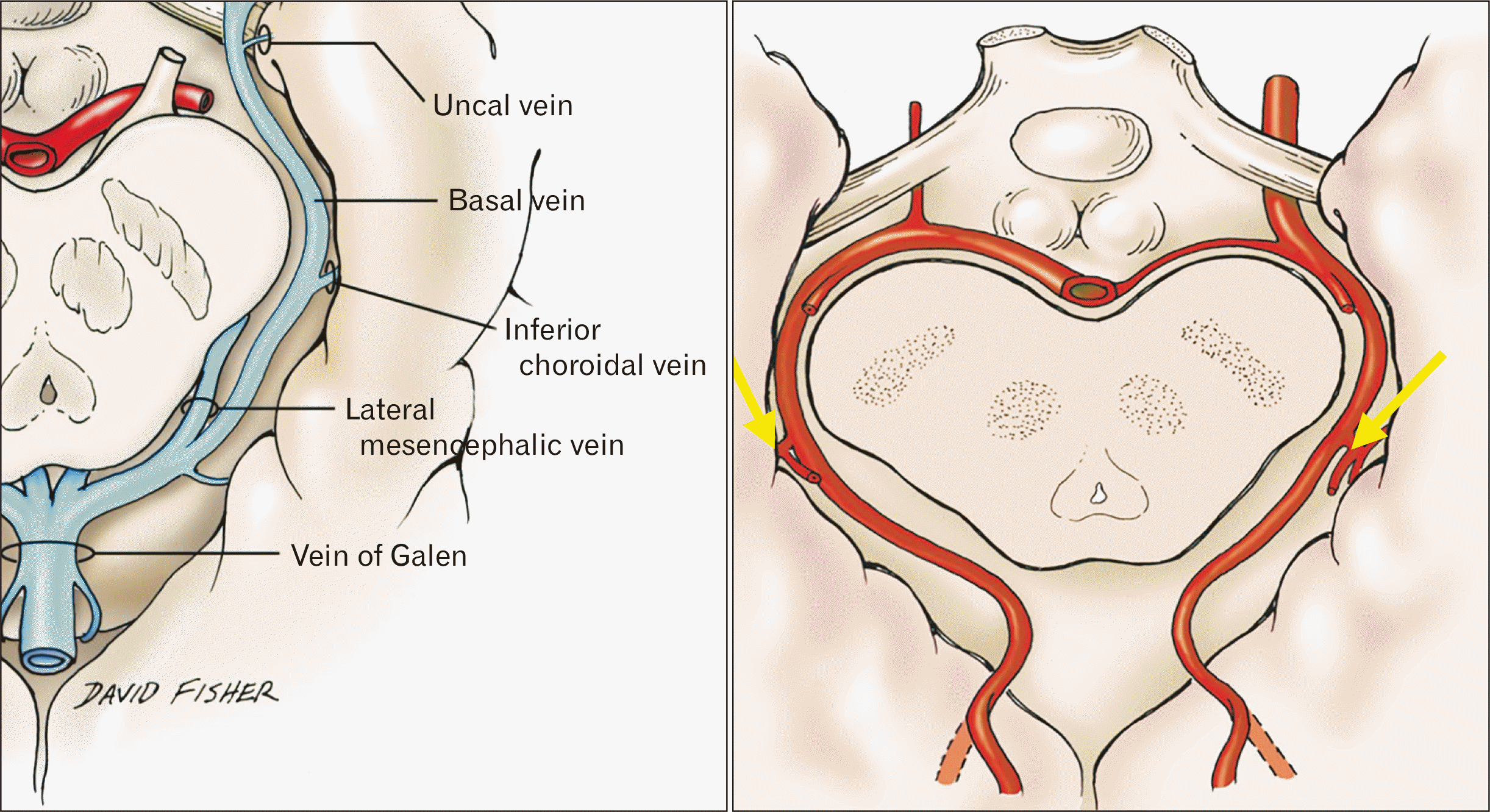
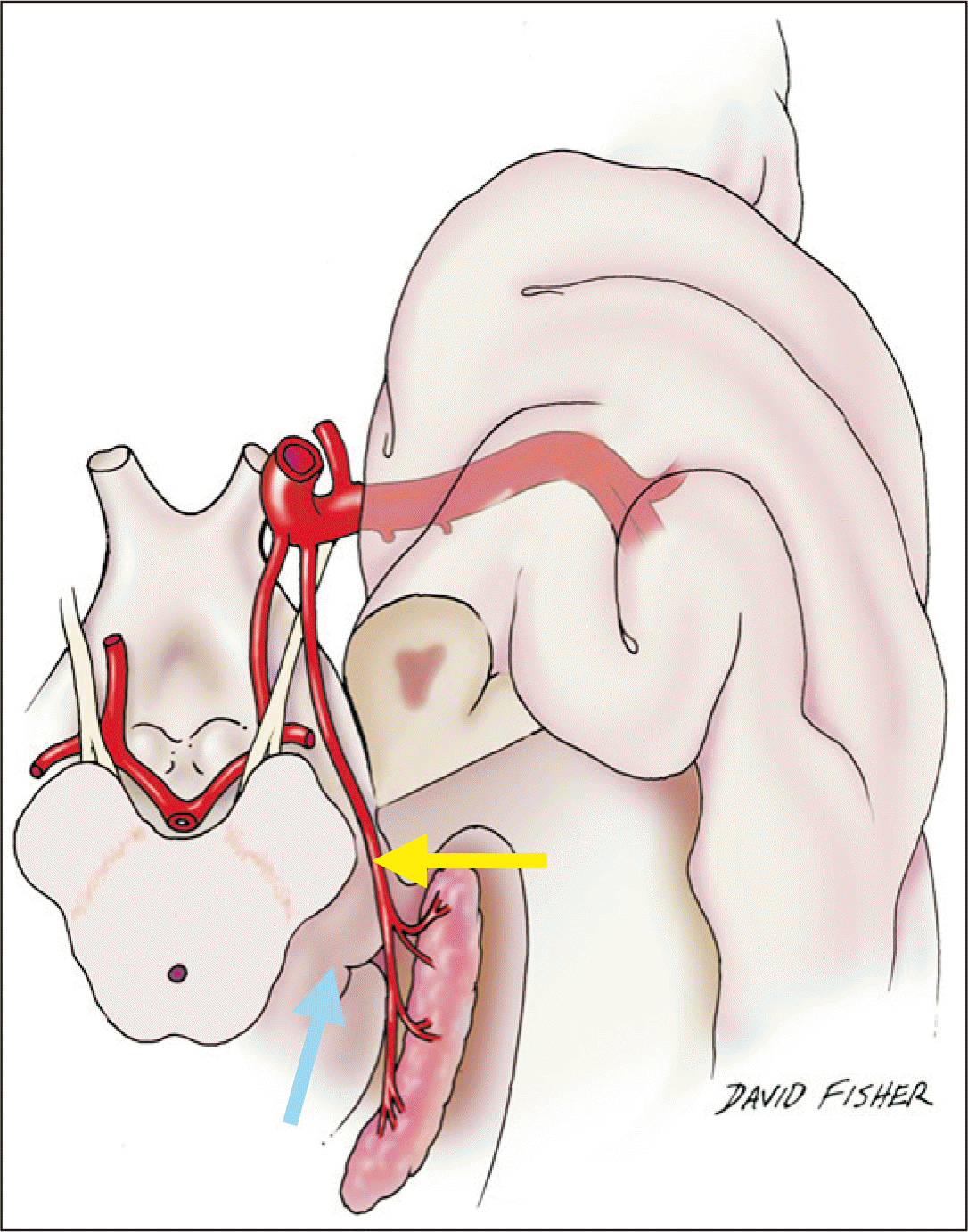





 PDF
PDF Citation
Citation Print
Print



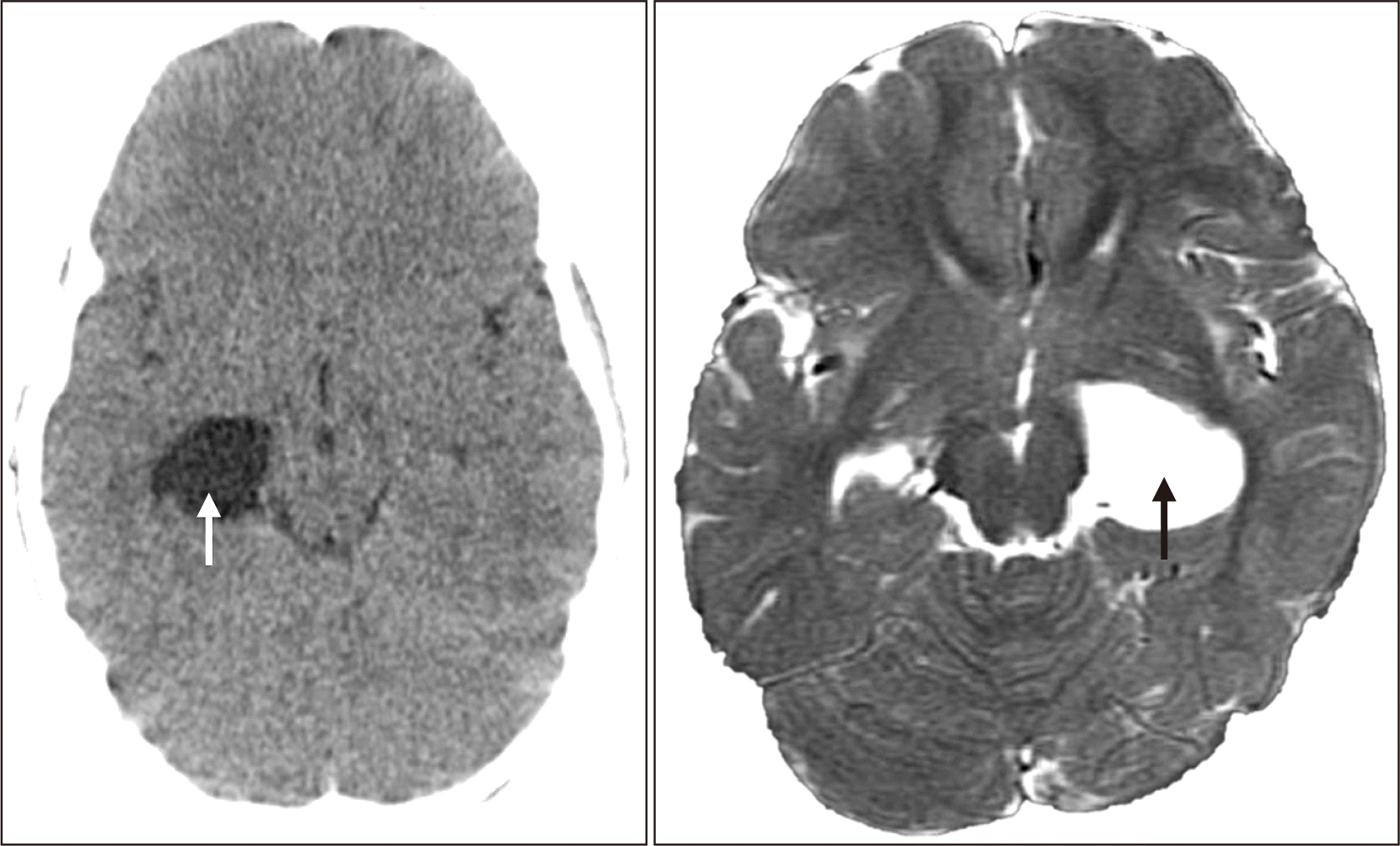
 XML Download
XML Download